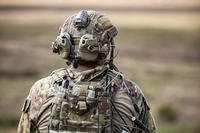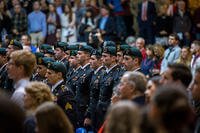The shoulder boards placed on Jimmy Doolittle's dress uniform in 1985 were literally museum pieces. Born on Dec. 14, 1896, the famed pilot was 88 years old when he finally received his promotion to four-star general. Having long since decided he would never earn that last star, Doolittle had donated the "bars of stars" Gen. George S. Patton gave him in 1945 to the Aviation Museum at Wright-Patterson Air Force Base. When President Ronald Reagan ordered Doolittle's promotion to full general, the insignia were taken out of one showcase and given another.
James H. Doolittle was a one-of-a-kind aviation pioneer. "His life intersected with many of the most critical moments in the history of aviation and airpower," wrote C.V. Glines, author of several books about Doolittle, who assisted the general in writing his memoirs, "I Could Never Be So Lucky Again." After a youth in Gold Rush-era Alaska, Doolittle studied mining at the University of California, then enlisted in the Army's pilot training program. Although World War I ended before he saw any action, he completed ground school and flight training and was commissioned a second lieutenant in 1918.
Between the wars, Doolittle began compiling records. In 1922, he made the first transcontinental crossing of the U.S. in a single day — 2,100 miles in 21 hours. In 1927, he completed the gravity-defying "outside loop" maneuver in a Curtiss P-1. In 1929, he made the first "blind" flight in history, operating entirely on instruments from takeoff to landing. As a breather, he was released from active duty to head the Guggenheim Full Flight Laboratory and was instrumental in developing flight instruments for use in adverse weather conditions.
Doolittle was busy managing Shell Oil's Aviation Department when he was recalled to active duty in 1940, just in time for World War II. In April 1942, he was tasked to organize and command a daring mission. Lt. Col. Doolittle led 16 Mitchell bombers off of the deck of the USS Hornet to bomb industrial targets in and around Japan's capital city. The so-called "Tokyo Raid" destroyed very little but caused incalculable damage to the psyches of the Japanese people and their military. "Doolittle's Raiders" gave their nation a needed shot of morale after the shock of Pearl Harbor. Doolittle thought he had botched the mission, but instead found himself promoted to brigadier general — and receiving a Medal of Honor. Later in the war, Doolittle again showed initiative and courage when he led the Eight Air Force during the invasion of Europe.
He retired from active duty in 1946 and returned to Shell Oil, where he worked until 1959. During a busy retirement, the man known as "master of the calculated risk" remained a vital force in aviation and aerospace science. Doolittle died on Sept. 27, 1993, and is buried in Arlington National Cemetery.















